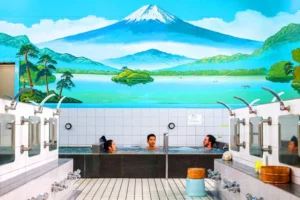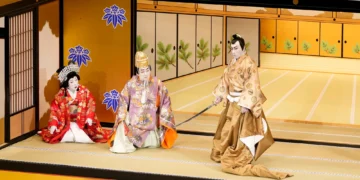In Japan, the culture of sentos is deeply significant, rooted in centuries-old traditions. Central to this cultural tapestry are two distinct bathing experiences: sentos and onsens. While both provide relaxation and rejuvenation, they have unique characteristics that distinguish them from one another. Let’s explore the captivating world of sentos and uncover what makes them special compared to onsens.
The Culture of Sentos:
Sentos, or public bathhouses, have long been an integral part of Japanese culture, serving as communal spaces for cleansing, socializing, and rejuvenating the body and spirit. Originating during the Edo period (1603-1868), sentos were initially built as public facilities for those who did not have access to private baths. Over time, they evolved into cherished institutions that reflect the essence of Japanese community life.
Accessible to All: Inclusivity and Accessibility
A key characteristic of sentos is their accessibility to everyone. Unlike onsens, typically located in rural areas and often requiring travel to reach, sentos are situated in urban centers and neighborhoods throughout Japan. This makes them convenient for both locals and visitors. Their easy accessibility promotes a sense of inclusivity and community, inviting people from various backgrounds to enjoy the communal bathing experience.
Artistic Designs: Architectural Beauty and Creativity
Sentos are renowned for their distinctive architectural designs and artistic flourishes. From vibrant murals and intricate tile work to ornate fixtures and decorative elements, each sento boasts its own unique aesthetic that reflects the creativity and craftsmanship of its creators. Many sentos feature themed baths, such as retro-style “showa-era” baths or themed baths inspired by nature, history, or culture, adding to the allure and charm of the bathing experience.
Cultural Significance: Preserving Tradition and Heritage
Beyond their practical function, sentos hold profound cultural significance as custodians of tradition and heritage. For centuries, sentos have served as communal gathering spaces where people come together to relax, unwind, and connect with one another. The rituals and customs associated with bathing in sentos are steeped in tradition, passed down through generations as a cherished aspect of Japanese culture.

Social Interaction: Fostering Connections and Camaraderie
One of the most cherished aspects of sentos is their ability to foster social interaction and camaraderie among bathers. In the communal bathing areas, strangers become friends as they engage in lighthearted conversation, share stories, and offer friendly gestures of camaraderie. The egalitarian nature of sentos, where individuals of all ages and backgrounds come together in shared spaces, creates a sense of unity and belonging that transcends societal boundaries.
Hygienic Practices: Cleanliness and Sanitation
Ensuring high standards of cleanliness and sanitation is paramount in sentos, providing a safe and hygienic bathing environment for all. Sentos follow strict regulations and protocols to maintain the purity and quality of their bathing water, with regular testing and maintenance to protect the health and well-being of patrons. This dedication allows visitors to enjoy a pristine and rejuvenating experience in a clean and inviting setting.
Conclusion: Embracing the Culture of Sentos
In conclusion, sentos represent more than just places to bathe—they embody the spirit of Japanese community, tradition, and hospitality. With their accessibility, artistic designs, cultural significance, and emphasis on social interaction and hygiene, sentos offer a unique and enriching bathing experience that sets them apart from onsens and other bathing traditions. As custodians of Japanese heritage, sentos continue to captivate and inspire visitors, inviting them to immerse themselves in the timeless rituals and traditions of Japanese bathing culture. Whether you’re a resident or a traveler, a visit to a traditional Japanese sento is an experience not to be missed—a journey into the heart and soul of Japan’s rich cultural tapestry.
























